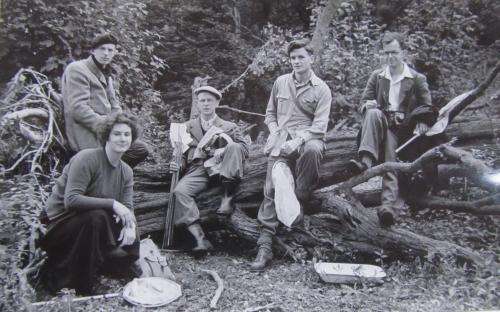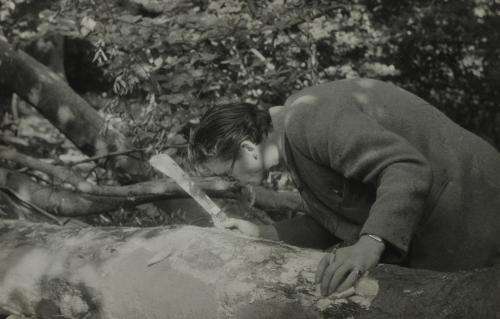Re-discovered diaries shed new light on one of the world's most studied woods

The re-discovered diaries and photographs of ecological pioneer Charles Elton have been digitised for the first time, providing a unique insight into the changing face of an Oxfordshire woodland from the second world war to the swinging sixties.
Speaking at this week's meeting of the British Ecological Society and the Société Française d'Ecologie in Lille, Dr Keith Kirby of the University of Oxford will reflect on Elton's diaries and their importance for ecologists today.
Wytham Woods is an area of ancient semi-natural woodland west of Oxford and one of the most studied areas of woodland in the world. It was given to the University of Oxford in 1942 by the ffennel family, since when it has hosted numerous undergraduate and postgraduate students and generated a wealth of long term biological data, including more than 60 years of bird data, a 40 year vegetation record and badger data from over 30 years.
Despite these decades of intense study, little published information on what the Woods were actually like existed for the 1950s and 1960s until the rediscovery of Elton's notebooks stored in Oxford's Museum of Natural History. (This also houses the specimens he collected). The diaries detail Elton's regular visits to Wytham from 1942 to 1965 and help paint a vivid and more complete picture of the woods' history and wildlife. The archives were transcribed and edited into downloadable, easily searchable electronic format by a volunteer during 2013-14, along with notes of visits to other sites in the region.
As well as documenting the many ecological changes at Wytham, the photographs accompanying the diaries reveal fascinating changes in ecologists as a species. According to Dr Kirby: "The pictures show more ties on students, more smoking, the women regularly wear skirts for field work and some of the pictures reveal what today's leading ecologists looked like in their student days."

Elton's diaries provide interesting insights into the events and management practices that have shaped Wytham Woods, and underline the importance of observational studies and long-term research.
Like Elton, Dr Kirby has spent part of his career working in Wytham Woods. His work there began in 1974 with a study of brambles, and more recently he became involved with a project to update our knowledge of the history of the woods.

"Most of us owe a great debt to those researchers who have gone before us: Newton described it as 'standing on the shoulders of giants'. I can express this in a slightly different way – once a month, for the last year I have literally been walking in the footsteps of one of ecology's giants, Charles Elton," says Dr Kirby.
With the imminent release of the Elton diaries online, now everyone with an interest in Wytham Woods can walk in the footsteps of ecology's giants and use their knowledge to gain a better understanding of the woods today.
Provided by British Ecological Society

















